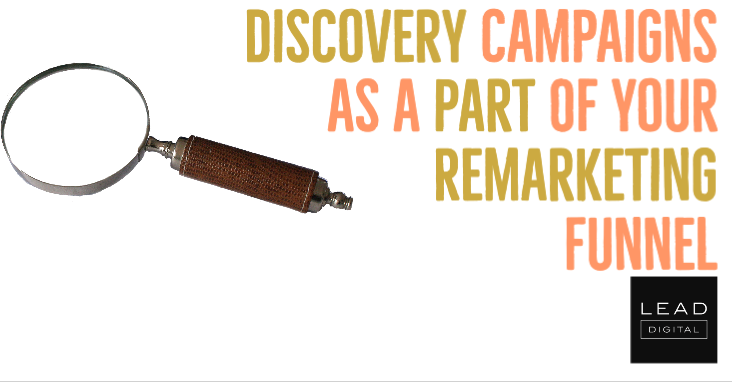 Do you remember what you were doing one year ago? It was a simpler time – the Toronto Raptors were in the midst of an NBA championship run, activists were gearing up to storm Area 51, and a little diddy called “Old Town Road” was burning up the airwaves. You may also remember May 2019 for Google announcing the availability of “Discovery Campaigns”, which were subsequently rolled out to advertisers throughout the year. If you have not yet experimented with Discovery Campaigns, you should strongly consider doing so. My experience has convinced me that they can be a powerful tool, especially for expanding a remarketing strategy.
Do you remember what you were doing one year ago? It was a simpler time – the Toronto Raptors were in the midst of an NBA championship run, activists were gearing up to storm Area 51, and a little diddy called “Old Town Road” was burning up the airwaves. You may also remember May 2019 for Google announcing the availability of “Discovery Campaigns”, which were subsequently rolled out to advertisers throughout the year. If you have not yet experimented with Discovery Campaigns, you should strongly consider doing so. My experience has convinced me that they can be a powerful tool, especially for expanding a remarketing strategy.
Discovery Campaigns: What Are They?
If you have not yet discovered* the campaign type, here’s what you need to know. Discovery Campaigns can show ads on three placements – Youtube, Gmail, and Google’s Discovery Feed. Google’s Discovery feed, for the uninitiated, is a feed that shows on the Google App and the Google mobile home page that shows stories and links based on a user’s interests.
In terms of how the ads appear, they are similar in many respects to Google’s responsive display ads. They take an input of several images, a logo, and headlines, and combines those for different placements. They can show as a carousel-type ad, allowing users to scroll through different images and headline pairings. Here’s are a few examples of how they might appear on different placements:

Discovery Vs. The Google Display Network
In order to test this new campaign type in one of my accounts I created a Discovery Campaign targeting a remarketing list and enabled it to run at the same time as the previously created display remarketing campaign. The account in question was a real estate advertiser with the goal of generating leads. Prior to discussing the results of this campaign, I wanted to highlight a few aspects of the experiment: – Read more



